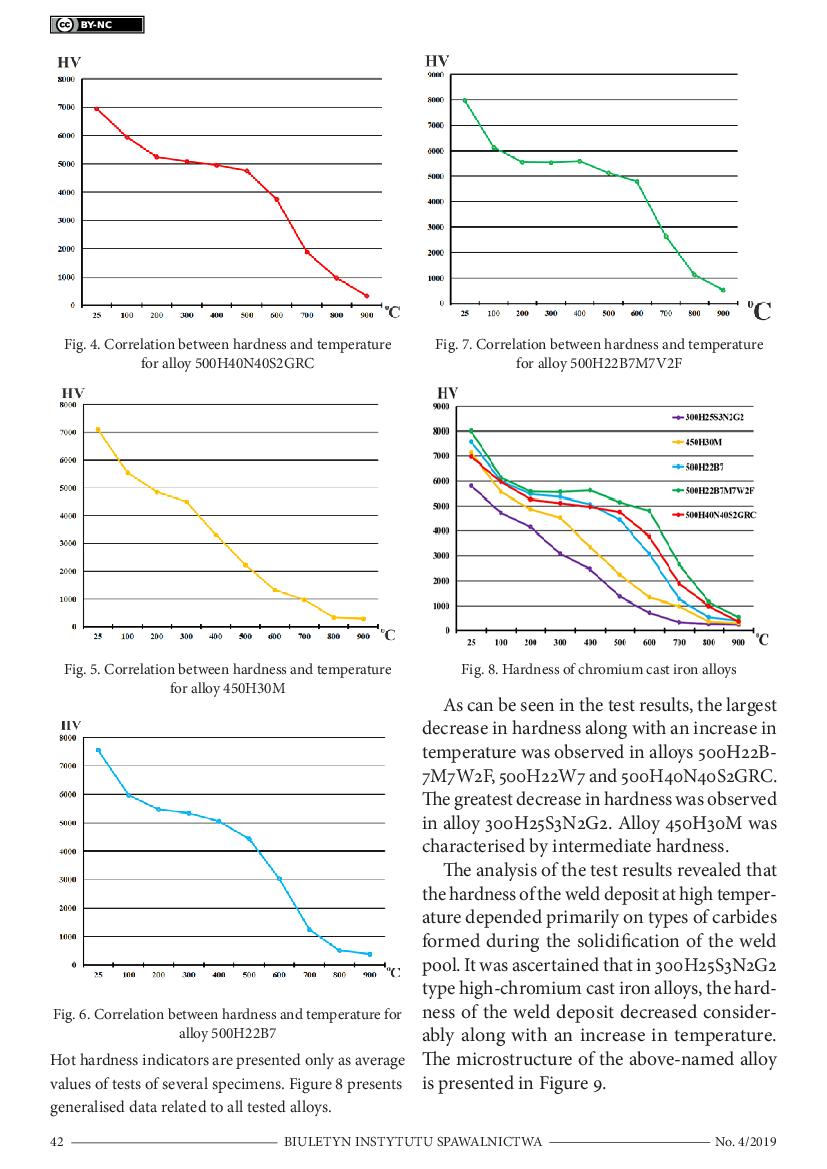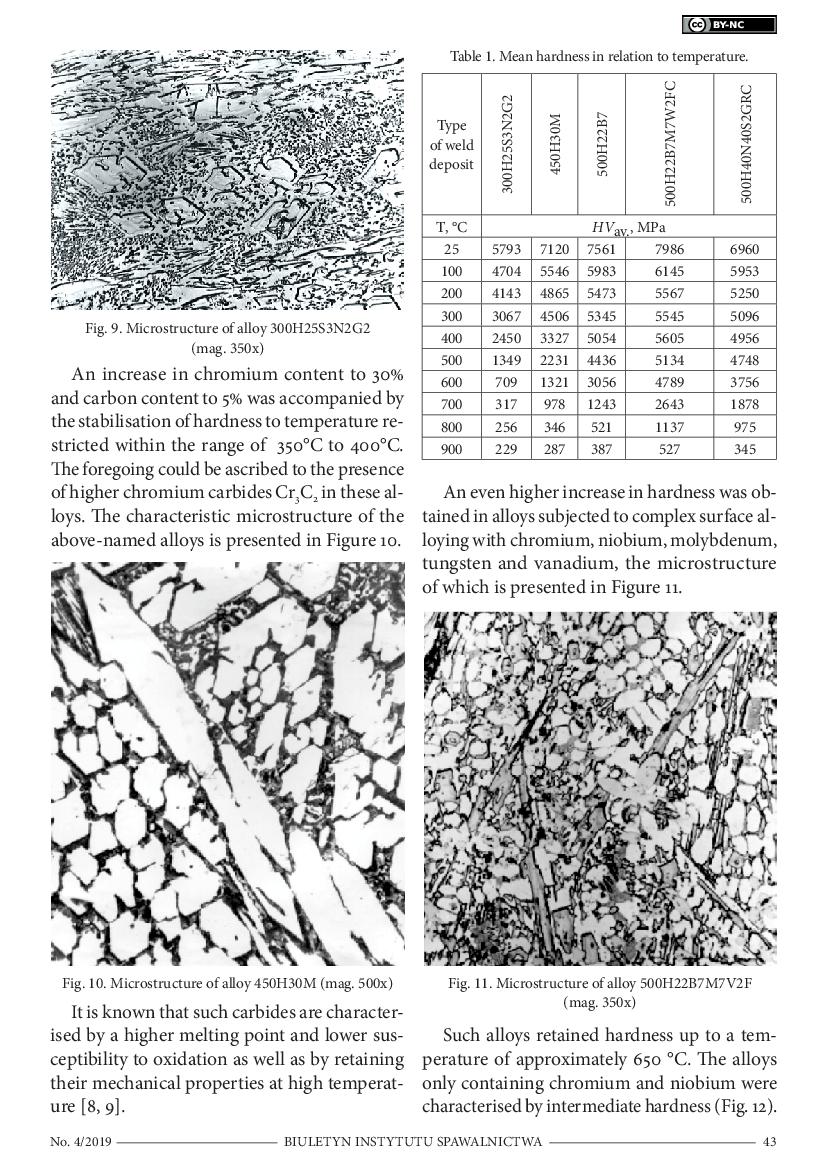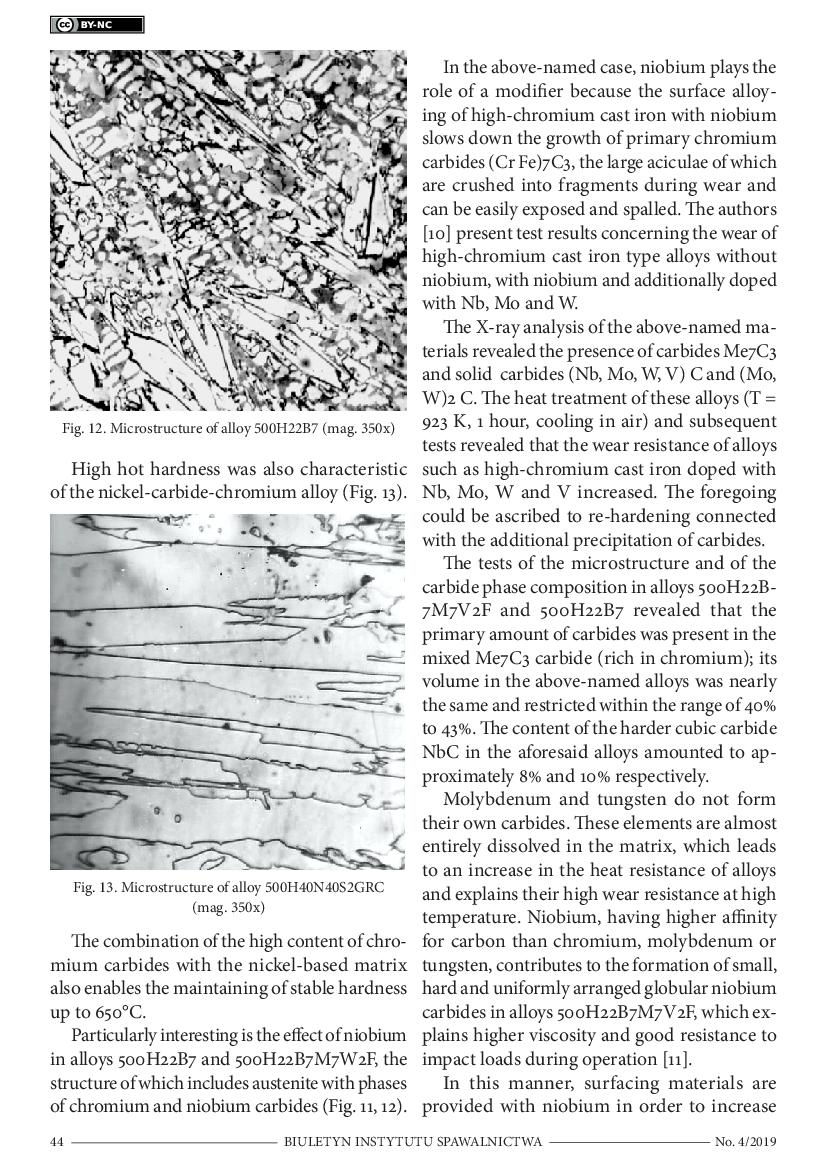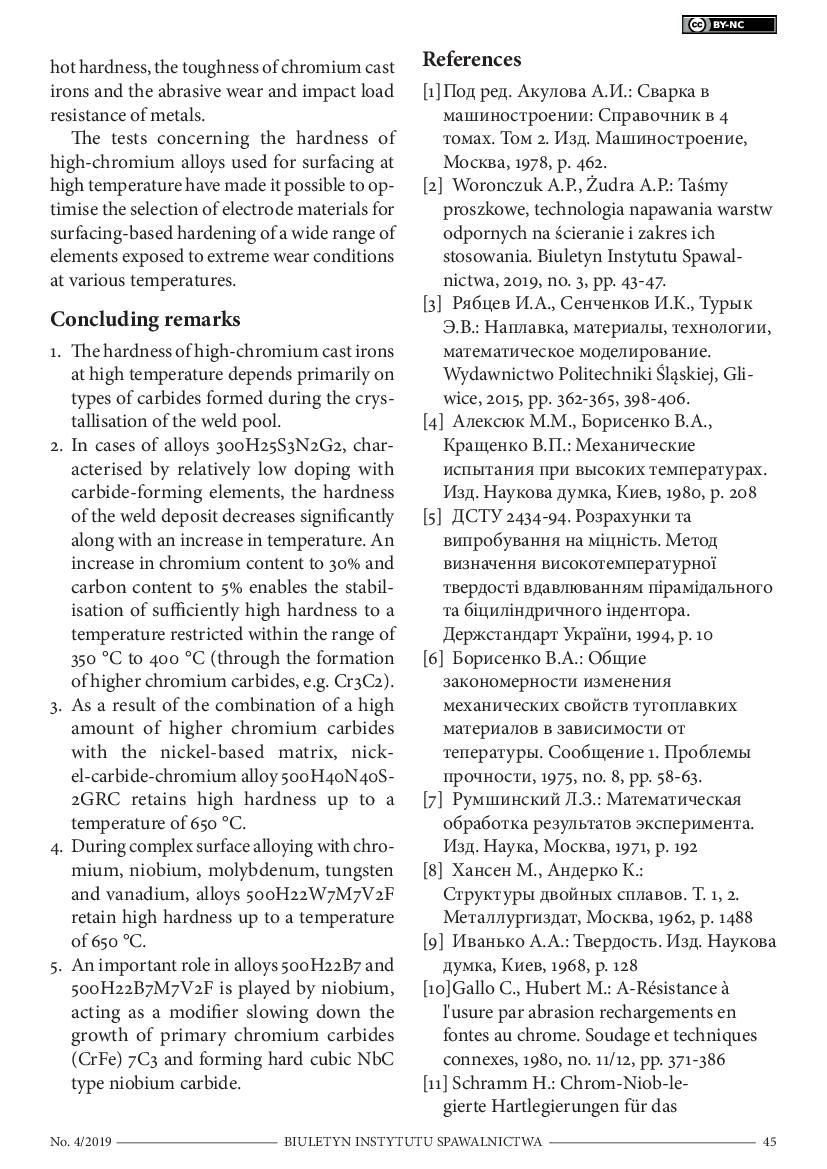The Effect of Temperature on the Hardness of High-Alloy Carbide-Chromium Alloys Surfaced with Flux-Cored Strips
The development of surfacing materials deposited on elements exposed to extreme wear at high temperature is based on investigating the correlation between the hot hardness of the weld deposit and its alloy system. The article discusses the methodology and results concerning the hot hardness of deposited high-chromium cast irons characterised by various doping degrees, e.g. 450H30M, 500H22B7, 500H22B7M7W2F and 300H25S3N2G2 as well as nickel-carbide-chromium alloy 500H40N40S2GRC.
Related tests revealed that the hot hardness of the weld deposit depends primarily on the presence and types of carbides formed in the weld pool. The hardness of relatively low-alloy high-chromium cast irons decreases along with an increase in temperature and increases along with an chromium content of up to 30% and a carbon content of up to 5%. Chromium, niobium, molybdenum, tungsten and vanadium-surface alloyed alloys retain their hardness up to a temperature of 650 °C. In terms of the above-named alloys, an important role is played by niobium, acting as a modifying agent and moderating the growth of primary chromium carbides and forming hard cubic niobium carbide. Because of the high content of higher chromium carbides in the nickel-based matrix, the nickel-carbide-chromium alloy is characterised by high hardness at a temperature of up to 650 °C.
doi: 10.17729/ebis.2019.4/4
 1 / 8
1 / 8
 2 & 3 / 8
2 & 3 / 8
 4 & 5 / 8
4 & 5 / 8
 6 & 7 / 8
6 & 7 / 8 8 / 8
8 / 8








